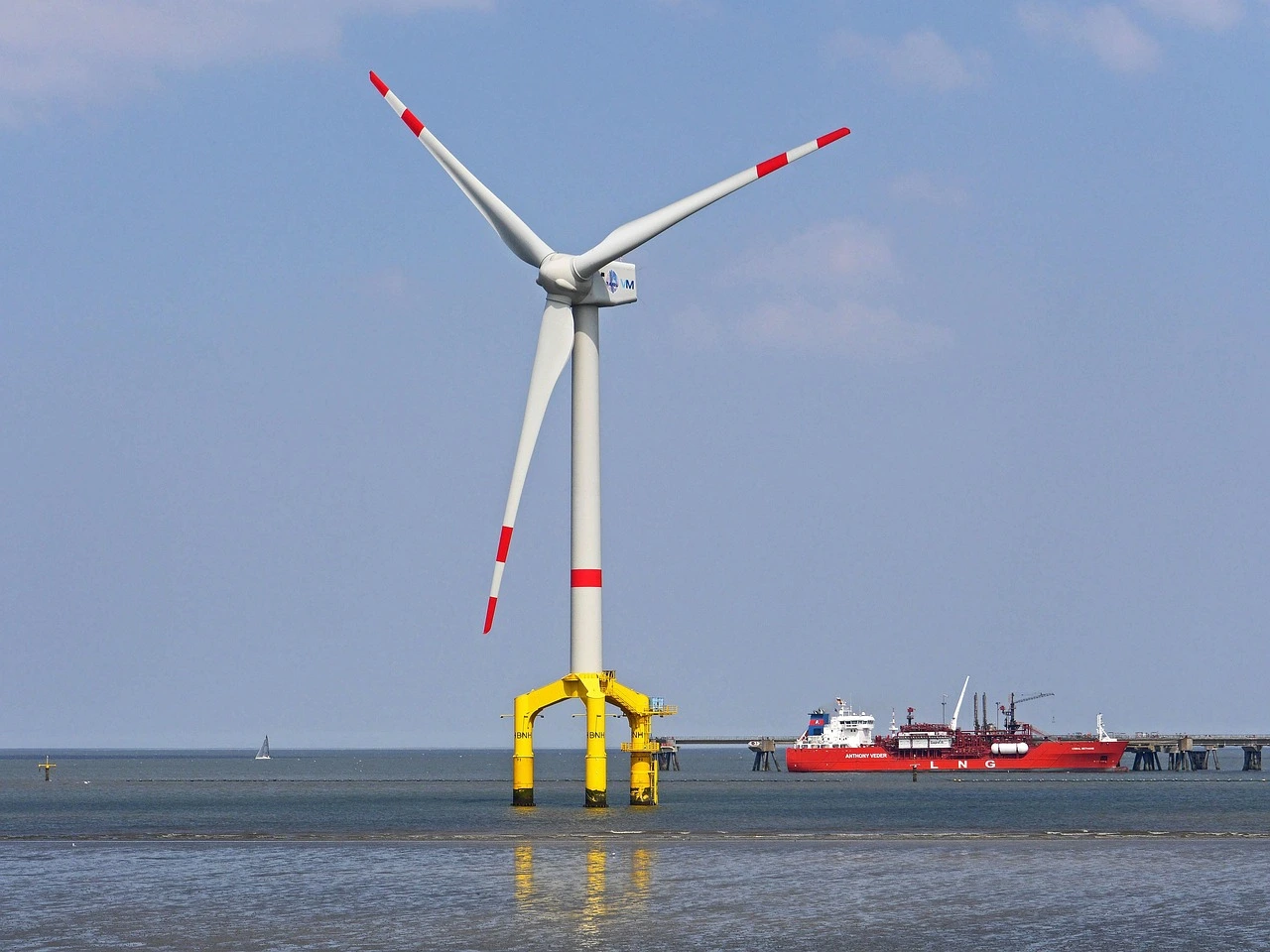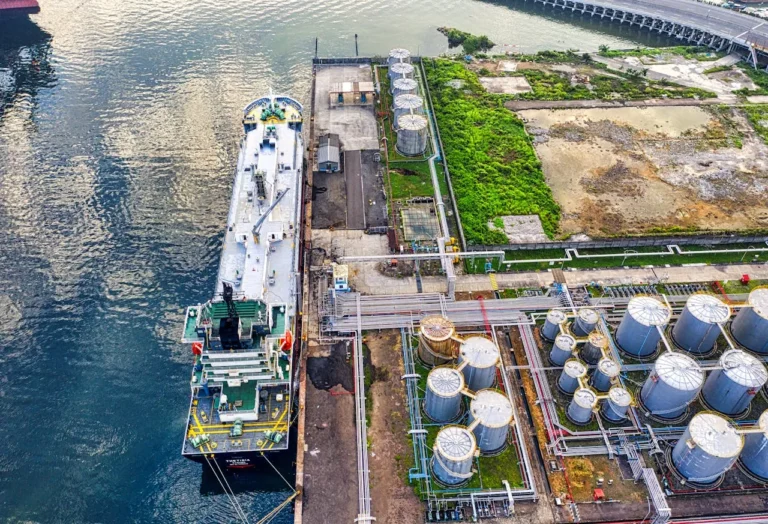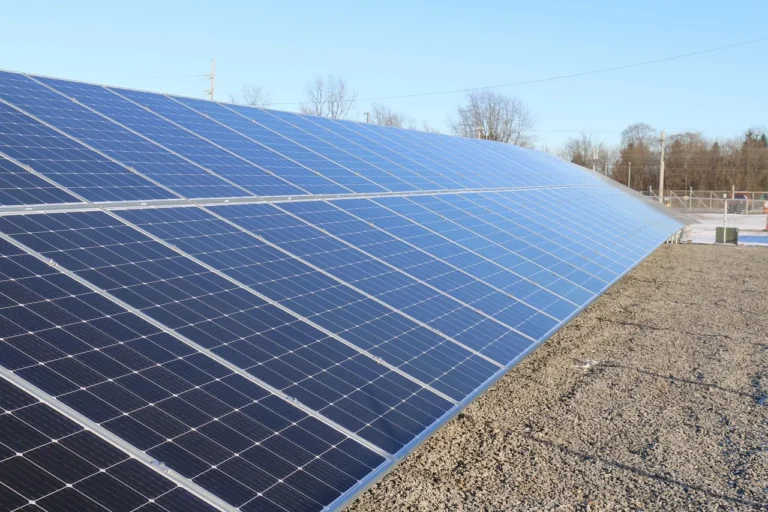
RWE Completes Installation of All Wind Turbine Foundations for Nordseecluster A, Marking Major Milestone in 1.6 GW Offshore Wind Project
RWE has announced the successful installation of all 44 monopile foundations and accompanying secondary steel structures for its Nordseecluster A offshore wind project, marking a critical milestone in one of Europe’s largest renewable energy developments. The Nordseecluster, located approximately 50 kilometers north of the German island of Juist in the North Sea, represents a major step forward in Germany’s efforts to expand offshore wind capacity and transition to a sustainable energy future.
Sven Utermöhlen, CEO of RWE Offshore Wind, celebrated the achievement, emphasizing the importance of collaboration in reaching this stage of the project. “The completion of the foundation installation marks a key step towards implementing our 1.6-gigawatt Nordseecluster, currently the largest offshore wind project off the German coast. I would like to express my sincere gratitude to the RWE team, Van Oord, and all other companies and partners who contributed to this success,” said Utermöhlen.
Engineering and Installation Achievements
Each of the 44 monopile foundations installed for Nordseecluster A measures approximately 85 meters in length and weighs an average of 1,500 tonnes — the equivalent of about 1,000 small cars. Before installation, the massive steel structures were stored temporarily at Eemshaven in the Netherlands. From there, they were transported to the offshore site using Van Oord’s specialized installation vessels: the Boreas for monopiles and the Aeolus for secondary steel structures.
The installation process employed an optimized engineering design approach. Instead of the traditional method of using separate transition pieces between the monopile and the turbine tower, RWE chose an extended single monopile design. This design allowed for the direct attachment of secondary steel structures — such as the boat landing, main access platform, and internal cassette — offshore. The streamlined approach not only simplified the installation process but also significantly reduced the total amount of steel required, improving material efficiency and minimizing environmental impact.
Steady Progress in Offshore Construction
Construction of Nordseecluster A remains on schedule, reflecting RWE’s strong project management and offshore engineering capabilities. In addition to completing all wind turbine foundations, RWE and its contractors have already installed the monopile foundation for one of the two offshore substations that will serve the wind farm. The foundation for the second substation — a jacket structure — is scheduled for installation before the end of 2025, with both topsides expected to be in place by 2026.
Preparations for internal cabling are also advancing. Soil investigations and seabed preparations are currently underway to support the laying of approximately 70 kilometers of inter-array cables. Cable installation is expected to begin in early 2026, connecting the turbines and substations to form a fully integrated offshore power network.
Following these infrastructure steps, the installation of the 44 wind turbines is slated to begin in the summer of 2026. Once the turbines are operational, Nordseecluster A will have a total installed capacity of 660 megawatts (MW), capable of supplying a significant portion of Germany’s renewable energy demand.
Expanding to Nordseecluster B and Beyond
Nordseecluster A represents only the first stage of the broader Nordseecluster offshore development. The second phase, Nordseecluster B, will add an additional 900 MW of capacity through the installation of 60 more wind turbines. This second stage is expected to enter commercial operation in 2029.
Together, Nordseecluster A and B will form a 1.6-gigawatt (GW) offshore wind complex — one of the most powerful in German waters. When fully operational, the combined Nordseecluster will generate enough clean electricity to power the equivalent of approximately 1.6 million German households, significantly contributing to the country’s climate and energy transition goals.
The Nordseecluster project is a joint venture between RWE, which holds a 51% share, and Norges Bank Investment Management (NBIM), which owns the remaining 49%. RWE leads the project’s construction, operation, and maintenance activities across the entire lifecycle, ensuring the long-term sustainability and reliability of the offshore wind farms.
Strengthening Germany’s Offshore Wind Capabilities
Germany has set ambitious renewable energy targets as part of its broader Energiewende strategy, aiming to install at least 30 GW of offshore wind capacity by 2030. The Nordseecluster project plays a crucial role in achieving this goal, showcasing the scalability and technological innovation needed for large-scale offshore wind expansion. By investing in efficient foundation designs, state-of-the-art vessels, and advanced project coordination, RWE continues to demonstrate leadership in accelerating the global clean energy transition.
RWE’s Global Offshore Wind Leadership
RWE is recognized as one of the world’s foremost players in offshore wind, with more than two decades of experience in developing, constructing, and operating large-scale projects. Its portfolio includes numerous landmark wind farms across Europe and beyond, each contributing to the decarbonization of energy systems and the strengthening of energy security.
In addition to Nordseecluster, RWE is currently implementing several other high-profile offshore wind projects worldwide. These include the 1.4 GW Sofia offshore wind farm in the United Kingdom, the 1.1 GW Thor project in Denmark (in partnership with Norges Bank Investment Management), and the 795 MW OranjeWind project in the Netherlands, developed jointly with TotalEnergies. Together, these developments position RWE as one of the global leaders in delivering sustainable offshore power generation at scale.
A Sustainable Vision for the Future
The completion of all wind turbine foundations for Nordseecluster A represents far more than just an engineering milestone — it signifies continued momentum toward a decarbonized energy future for Europe. By deploying innovative construction methods, reducing material use, and adhering to strict environmental standards, RWE is setting new benchmarks for efficiency and sustainability in offshore wind development.
Once fully operational, the Nordseecluster will stand as a model of international collaboration, technical excellence, and environmental responsibility. It will provide reliable, clean electricity to millions of households, support the creation of green jobs, and strengthen Europe’s energy independence.
As global demand for renewable power continues to grow, RWE’s achievements in Nordseecluster A reaffirm its position as a driving force in the offshore wind industry — one committed to delivering the energy transition not just for Germany, but for a sustainable world.
Source Link: https://www.rwe.com/











